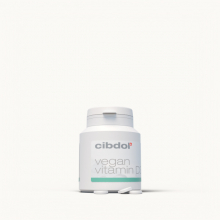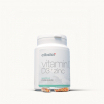How can i get vitamin d naturally?
Published:
Vitamin D deficiency is incredibly common worldwide, with an estimated 1 billion people not getting enough of this important vitamin. Known as the "sunshine vitamin", vitamin D is essential for health. It plays a role in bone health, immune function, cancer prevention and more.
Contents:
- What is Vitamin D and Why Do You Need It?
- Am I Deficient in Vitamin D?
- Signs and Symptoms of Vitamin D Deficiency
- What Is the Optimal Vitamin D Level?
- How Much Vitamin D Do You Need?
- Top 10 Vitamin D Food Sources
- Sun Exposure for Vitamin D
- Benefits of Vitamin D Supplements
- Foods Fortified with Vitamin D
- Can You Get Too Much Vitamin D?
- Key Points to Remember
- Q: How can I get vitamin D naturally?
- Q: What are some sources of vitamin D?
- Q: Is there a relationship between vitamin D and calcium?
- Q: Can I get more vitamin D by consuming fortified foods?
- Q: What is the difference between vitamin D3 and vitamin D?
- Q: How much vitamin D should I intake daily?
- Q: Are there any foods that are naturally high in vitamin D?
- Q: What are the risks for vitamin D deficiency?
- Q: Can vitamin D be obtained from food alone?
- Q: Is there a link between low levels of vitamin D and certain health conditions?
This article will explain why vitamin D is so important, risk factors for deficiency, how to optimize your levels and get enough from food and sun exposure.

What is Vitamin D and Why Do You Need It?
Vitamin D is a fat-soluble vitamin that functions as a hormone in the body. There are two main forms - vitamin D2 (ergocalciferol) and vitamin D3 (cholecalciferol).
Vitamin D3 is produced in your skin when exposed to sunlight, specifically UVB radiation. Very few foods contain significant amounts of vitamin D naturally. That's why vitamin D is often called "the sunshine vitamin".
This vitamin plays a crucial role in calcium absorption and bone health. It helps maintain adequate levels of calcium and phosphorus, essential for building and maintaining strong bones.
But vitamin D does way more than support bone health. Research suggests it may help:
- Boost immunity and fight infections
- Protect against cancer
- Support muscle strength
- Improve mood and reduce symptoms of depression
- Reduce inflammation
- Lower blood pressure
- Prevent diabetes
Vitamin D deficiency has been linked to an increased risk of various health problems, including bone loss, fractures, infections, autoimmune diseases and even certain cancers like colorectal cancer.
That's why maintaining adequate vitamin D levels is incredibly important for your overall health.
Am I Deficient in Vitamin D?
Vitamin D deficiency is very common worldwide, with an estimated 41.6% of people deficient. Certain individuals are at an even greater risk:
- Older adults - As you age, your skin becomes less efficient at producing vitamin D from sun exposure. Your kidneys are also less able to convert vitamin D to its active form.
- People with dark skin - Greater amounts of melanin lead to lower vitamin D production.
- Obese individuals - Vitamin D is extracted from the blood by fat cells, altering its release into circulation.
- People with certain conditions - Including celiac disease, Crohn's disease and cystic fibrosis.
- Breastfed infants - Breast milk is low in vitamin D.
- People with limited sun exposure - Either due to geographic location or wearing sunscreen when outdoors.
Deficiency isn't just linked to inadequate sun exposure and diet. Other factors that increase your risk include:
- Kidney and liver disease - Impair vitamin D conversion and absorption.
- Surgery - Such as stomach bypass or gastrectomy surgery.
- Medications - Including immune-suppressing drugs, anticonvulsants, glucocorticoids and antifungals.
Signs and Symptoms of Vitamin D Deficiency
Many people with a vitamin D deficiency have no obvious symptoms. Some signs to look out for include:
- Fatigue and weakness
- Bone and back pain
- Depression, poor mood and seasonal affective disorder
- Impaired wound healing
- Bone loss, frequent fractures and osteoporosis
- Increased risk of infection
- Hair loss
- Muscle cramps
Testing your vitamin D levels with a blood test is the only way to definitively diagnose a deficiency.
What Is the Optimal Vitamin D Level?
Experts recommend keeping your vitamin D level within the normal range to ensure you're getting enough. Here are the reference ranges:
- Deficient: Under 12 ng/ml (30 nmol/L)
- Insufficient: 12–20 ng/ml (30–50 nmol/L)
- Adequate: 20–50 ng/ml (50–125 nmol/L)
- Ideal range: 40–60 ng/ml (100–150 nmol/L)
- Toxic: Over 150 ng/ml (375 nmol/L)
Aim for a level of 40-60 ng/ml for optimal health. Taking a vitamin D supplement can help you maintain levels within the healthy range.
How Much Vitamin D Do You Need?
The recommended dietary allowance (RDA) for vitamin D is 600 IU (15 mcg) daily for adults up to age 70. The RDA increases to 800 IU (20 mcg) for those over 70 years old.
Many experts now recommend a higher daily intake of 1000-4000 IU (25-100 mcg) of vitamin D to maintain optimal health. Your personal dosage can vary based on factors like sun exposure, where you live, skin color, bodyweight and more.
The tolerable upper limit is 4000 IU (100 mcg) for adults. Intakes above this may increase the risk of vitamin D toxicity.
Unless you get adequate sun and eat fatty fish regularly, you likely need 1000-2000 IU daily from foods and/or supplements to reach optimal levels.
Top 10 Vitamin D Food Sources
Very few foods naturally contain significant amounts of vitamin D. These are the top dietary sources:
- Salmon - 566 IU (14 mcg) per 3.5 ounces (100 grams)
- Swordfish - 566 IU (14 mcg)
- Herring - 504 IU (12.6 mcg)
- Portobello mushrooms - 384 IU (9.6 mcg)
- Mackerel - 360 IU (9 mcg)
- Tuna - 268 IU (6.7 mcg)
- Sardines - 250 IU (6.3 mcg)
- Egg yolks - 212 IU (5.3 mcg)
- Ricotta cheese - 160 IU (4 mcg)
- Beef liver - 156 IU (3.9 mcg)
Fatty fish like salmon, mackerel, sardines and tuna are among the few foods naturally rich in vitamin D. Small amounts are also found in beef liver, cheese, egg yolks and mushrooms.
Many foods are fortified with vitamin D, including milk, orange juice, yogurt, cereals and oatmeal. Check the label and aim for products containing at least 100 IU (2.5 mcg) per serving.
Sun Exposure for Vitamin D
Moderate sun exposure is the easiest way to get enough vitamin D. Simply spending 5–30 minutes outside 2-3 times per week allows your body to synthesize sufficient vitamin D.
Just be sure not to overdo it, as excessive sun exposure can cause skin damage. Here are some sensible guidelines to follow:
- Expose large areas of skin, such as your back, arms, legs and face. Don't use sunscreen during this short time.
- Plan your session around the hours of 10 am to 3 pm, when UVB rays are strongest.
- People with darker skin may need longer exposure to produce adequate vitamin D.
- Residing farther from the equator decreases vitamin D synthesis year-round.
- Winter sun in northern latitudes usually doesn't provide enough UVB rays.
Benefits of Vitamin D Supplements
Given how common deficiency is, many people can benefit from taking a vitamin D supplement. Supplements are especially important during fall and winter if you live far from the equator.
Research shows vitamin D supplements may help:
- Maintain healthy bone density and prevent fractures and falls in older adults
- Lower blood pressure
- Support healthy immune function
- Improve mood during the winter months
- Increase muscle strength
- Potentially lower risk of cancer and heart disease
The best form is vitamin D3 (cholecalciferol), which more effectively raises blood levels compared to D2. Look for a quality supplement containing vitamin D3 and aim for 1000-4000 IU daily, depending on your needs.
Measuring your levels every 3-6 months helps ensure you're taking the right dosage.
Foods Fortified with Vitamin D
Since very few foods contain vitamin D naturally, manufacturers fortify certain foods by adding it during processing.
Commonly fortified foods include:
- Milk - 98 IU (2.5 mcg) per cup
- Orange juice - 100 IU (2.5 mcg) per cup
- Yogurt - 40 IU (1 mcg) per cup
- Soy milk - 119 IU (3 mcg) per cup
- Cereals - 40-150 IU (1-3.8 mcg) per serving
- Oatmeal - 154 IU (3.9 mcg) per packet
- Bread - 60 IU (1.5 mcg) per slice
- Cheese - 100 IU (2.5 mcg) per ounce
Checking the label helps ensure your food choices are fortified. Opt for milk and plant milks with at least 100 IU (2.5 mcg) per serving.
Can You Get Too Much Vitamin D?
Yes, excessive vitamin D can lead to toxicity. Symptoms include:
- Nausea, vomiting, loss of appetite
- Constipation
- Increased thirst and urination
- High blood calcium (hypercalcemia)
- Bone pain and damage to soft tissues
Too much vitamin D is almost always caused by high dose supplements, not food or sun exposure. Adults should avoid exceeding the 4,000 IU (100 mcg) upper limit unless under medical supervision.
Toxicity is extremely rare at daily intakes below 10,000 IU (250 mcg). Get your levels tested regularly to ensure you're not taking too much.
Key Points to Remember
- Vitamin D deficiency is incredibly common worldwide but often has no symptoms. Get your blood levels tested to check your status.
- Regular, short sun exposure allows your body to naturally synthesize vitamin D.Aim for 5–30 minutes several times per week.
- Good food sources include oily fish, fish liver oils, mushrooms and egg yolks. Choose fortified foods like milk, juice and cereals.
- Vitamin D3 is the preferred form, as it raises blood levels more effectively than D2. Most people need 1000–4000 IU (25–100 mcg) daily.
- Measure vitamin D levels every 3-6 months to ensure you're taking the right dosage.
- Toxicity almost always occurs from overdoing supplements. Don't exceed 4,000 IU (100 mcg) without medical supervision.
Getting adequate vitamin D from sun, foods and/or quality supplements is an essential part of a healthy lifestyle. Optimizing your levels can help prevent disease and improve many aspects of health.
Q: How can I get vitamin D naturally?
A: You can get vitamin D naturally by exposing your skin to sunlight. Sunlight triggers the production of vitamin D in your body. It is recommended to expose your skin to sunlight for at least 10 to 30 minutes a day, preferably between 10 am and 3 pm.
Q: What are some sources of vitamin D?
A: Some sources of vitamin D include fatty fish (such as salmon, mackerel, and sardines), fortified dairy products (milk, yogurt, and cheese), fortified cereals, eggs, and mushrooms.
Q: Is there a relationship between vitamin D and calcium?
A: Yes, there is a strong relationship between vitamin D and calcium. Vitamin D helps the body absorb calcium from the diet. Without enough vitamin D, your body may struggle to absorb adequate amounts of calcium, leading to low calcium levels.
Q: Can I get more vitamin D by consuming fortified foods?
A: Yes, fortified foods are a good source of vitamin D. Many foods such as milk, orange juice, and cereals are fortified with vitamin D to help people meet their daily vitamin D needs.
Q: What is the difference between vitamin D3 and vitamin D?
A: Vitamin D3 and vitamin D are different forms of the same vitamin. Vitamin D3 is the natural form of vitamin D that is synthesized by the body when exposed to sunlight. Vitamin D2 is the form of vitamin D found in plant-based sources and is also used in supplements.
Q: How much vitamin D should I intake daily?
A: The recommended daily intake of vitamin D varies depending on age and other factors. The recommended daily intake for most adults is 600-800 international units (IU) per day.
Q: Are there any foods that are naturally high in vitamin D?
A: Yes, there are some foods that naturally contain vitamin D. Examples include fatty fish (such as salmon and mackerel), cod liver oil, and egg yolks.
Q: What are the risks for vitamin D deficiency?
A: Some factors that can increase the risk for vitamin D deficiency include limited sun exposure, dark skin, obesity, older age, and certain medical conditions that affect the absorption of vitamin D.
Q: Can vitamin D be obtained from food alone?
A: While it is possible to get vitamin D from food sources, it can be challenging to meet the recommended daily intake through food alone. This is why sunlight exposure and supplementation are often recommended to ensure adequate vitamin D levels.
Q: Is there a link between low levels of vitamin D and certain health conditions?
A: Research suggests that low levels of vitamin D may be associated with an increased risk of certain health conditions, such as osteoporosis, autoimmune diseases, and certain types of cancer. However, more studies are needed to fully understand these relationships.
Resources used to write this article
Nair, R., & Maseeh, A. (2012). Vitamin D: The “sunshine” vitamin. Journal of Pharmacology & Pharmacotherapeutics, 3(2), 118–126. https://doi.org/10.4103/0976-500X.95506
Grober, U., Spitz, J., Reichrath, J., Kisters, K., & Holick, M.F. (2013). Vitamin D: Update 2013: From rickets prophylaxis to general preventive healthcare. Dermato-Endocrinology, 5(3), 331-347. https://doi.org/10.4161/derm.26738
Holick, M.F. (2004). Sunlight and vitamin D for bone health and prevention of autoimmune diseases, cancers, and cardiovascular disease. The American Journal of Clinical Nutrition, 80(6), 1678S–1688S. https://doi.org/10.1093/ajcn/80.6.1678S
Pludowski, P., Holick, M. F., Grant, W. B., Konstantynowicz, J., Mascarenhas, M. R., Haq, A., Povoroznyuk, V., Balatska, N., Barbosa, A. P., Karonova, T., Rudenka, E., Misiorowski, W., Zakharova, I., Rudenka, A., Łukaszkiewicz, J., Marcinowska-Suchowierska, E., Łaszcz, N., Abramowicz, P., Bhattoa, H. P., & Wimalawansa, S. J. (2018). Vitamin D supplementation guidelines. The Journal of Steroid Biochemistry and Molecular Biology, 175, 125-135. https://doi.org/10.1016/j.jsbmb.2017.01.021
Autier, P., Mullie, P., Macacu, A., Dragomir, M., Boniol, M., Coppens, K., Pizot, C., & Boniol, M. (2017). Effect of vitamin D supplementation on non-skeletal disorders: A systematic review of meta-analyses and randomised trials. The Lancet Diabetes & Endocrinology, 5(12), 986-1004. https://doi.org/10.1016/S2213-8587(17)30357-1
Tripkovic, L., Lambert, H., Hart, K., Smith, C.P., Bucca, G., Penson, S., Chope, G., Hyppönen, E., Berry, J., Vieth, R., & Lanham-New, S. (2012). Comparison of vitamin D2 and vitamin D3 supplementation in raising serum 25-hydroxyvitamin D status: A systematic review and meta-analysis. The American Journal of Clinical Nutrition, 95(6), 1357–1364. https://doi.org/10.3945/ajcn.111.031070











